Read in English / 阅读语言 ไทย
![]() 简体中文
简体中文
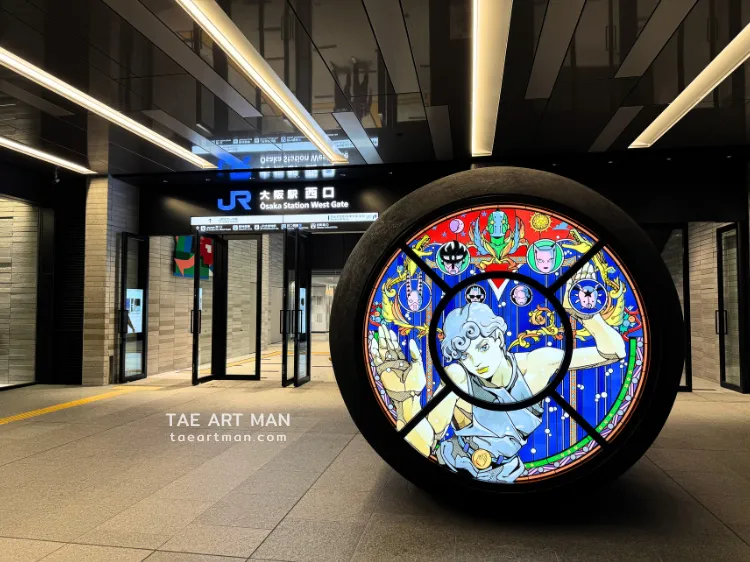
THE FOUNTAIN BOY of Osaka
THE FOUNTAIN BOY by famous manga artist Hirohiko Araki, the visionary behind the renowned JoJo’s Bizarre Adventure series. Commissioned by West Japan Railway Company (JR West), this piece is not only a homage to the city’s cultural history but also a reimagining of a beloved landmark, embodying both nostalgia and modernity. With the backdrop of Osaka’s ambitious West Art Project, this work reflects a larger movement to embed everyday spaces with art that resonates with community values and contemporary aesthetics.
Araki, revered for his distinctively detailed and dramatic art style, expressed a desire for the installation to offer “comfort, hope, and happiness” to those passing through Osaka Station. His first-ever public art piece is strategically placed near the station’s west gate, serving as a meeting point within the bustling transportation hub. This 2-meter-wide circular stained glass is both an artwork and a monument, becoming an immediate focal point within the newly developed Inogate Osaka complex.
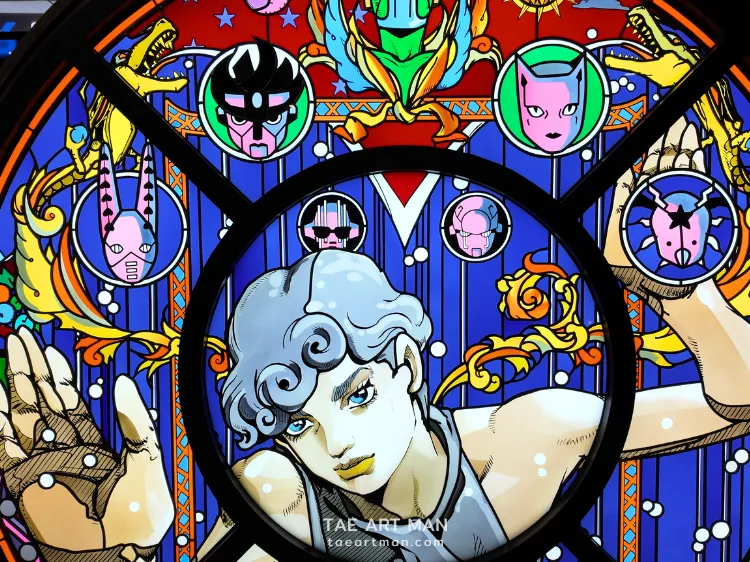
Blending Tradition with Pop Culture
The design of “THE FOUNTAIN BOY ” is rooted in a historical icon of Osaka Station—a statue of a boy standing in a fountain. This statue, present for over a century until its removal during renovations in 2004, was a well-loved fixture and a common rendezvous point. While the original statue now resides in storage at the Kyoto Railway Museum, Araki’s work is a contemporary revival that draws on the same sentimental appeal but with his signature JoJo aesthetic. The boy in Araki’s depiction is splashed with water in an artful homage to the original statue, but he’s accompanied by recognizable “Stands,” or supernatural guardians from the JoJo’s Bizarre Adventure series.
Incorporating characters (AKA the stand) such as Star Platinum, Stone Free, and Killer Queen into the stained glass not only honors Araki’s artistic legacy but bridges the JoJo fan community with the public, fostering an intersection between pop culture and everyday life. By blending these iconic JoJo elements with a classical stained glass medium, Araki has created a piece that speaks to diverse audiences: manga enthusiasts, art connoisseurs, and Osaka locals.
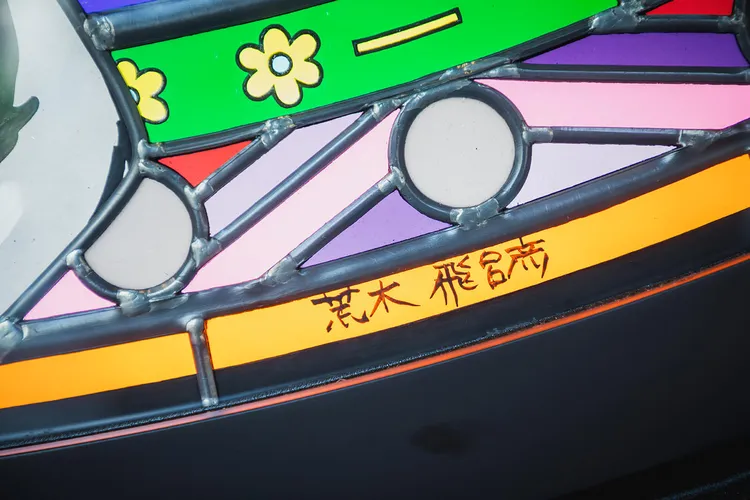
The Art of Stained Glass Revisited
Araki’s choice of stained glass as the medium for “THE FOUNTAIN BOY ” conveys a subtle message. Stained glass has historically been associated with sacred and architectural art, often adorning cathedrals and historic sites. The piece utilizes hand-blown, medieval-style glass from Germany’s Lamberts company, renowned for their craftsmanship that maintains traditional methods from centuries past. This deliberate choice in material reflects Araki’s intention to create a landmark that is timeless, deeply rooted in tradition, yet immediately accessible and modern in its narrative and form.
The stained glass’s dark, spherical frame provides a fitting contrast to the vibrant figures within, making the artwork a commanding presence amidst the movement and modernity of the Osaka Station West Gate area. The use of antique glass methods, despite the contemporary subject matter, serves as a reminder of the timeless value of craft and heritage in an era of rapid modernization.
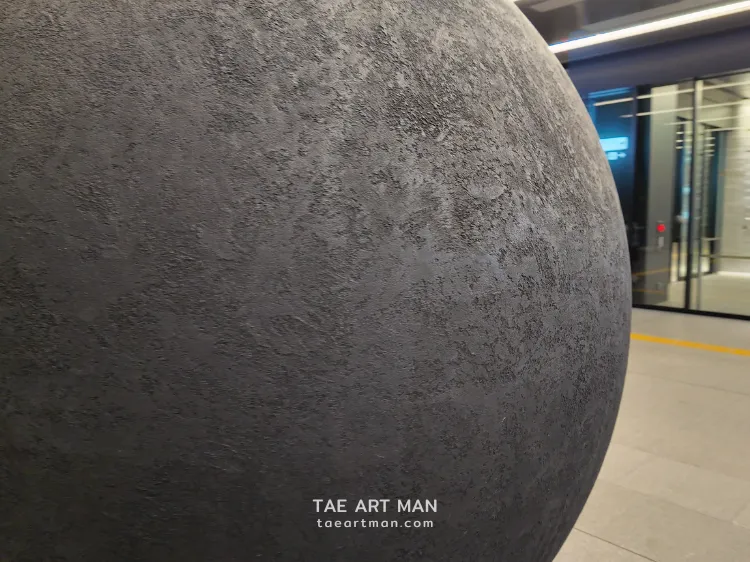
Osaka’s West Art Project: A Gateway to Everyday Art
Araki’s installation marks the beginning of JR West’s ambitious Osaka Station West Side Area Art Project, also known as WARP (West Art Project). Through WARP, JR West aims to transform Osaka Station into an immersive cultural environment, with art becoming an integrated part of daily life for commuters, travelers, and locals alike. WARP aligns with the opening of Inogate Osaka, a business and commercial complex dedicated to revitalizing the city’s cultural and economic landscape. Art, in this context, is not limited to galleries or museums but is woven into the fabric of public spaces, reflecting a global shift towards community-centered art projects.
By choosing Araki—a globally recognized figure in pop culture with a devoted following—the project exemplifies the trend of incorporating popular art forms and icons into formal public spaces, merging Japan’s rich cultural past with contemporary trends. This approach not only celebrates the city’s heritage but also positions Osaka as a city in dialogue with modernity, capable of attracting both local and international audiences.
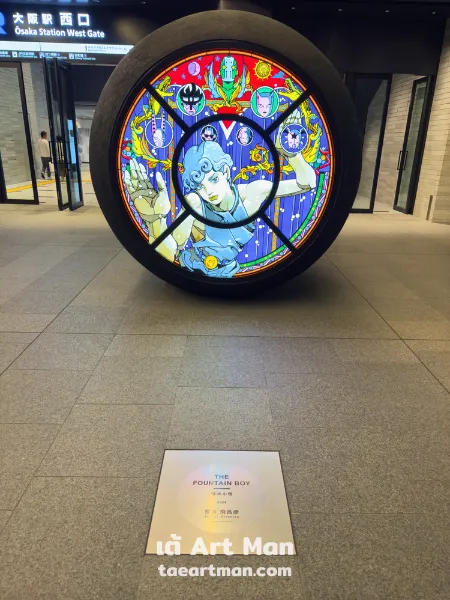
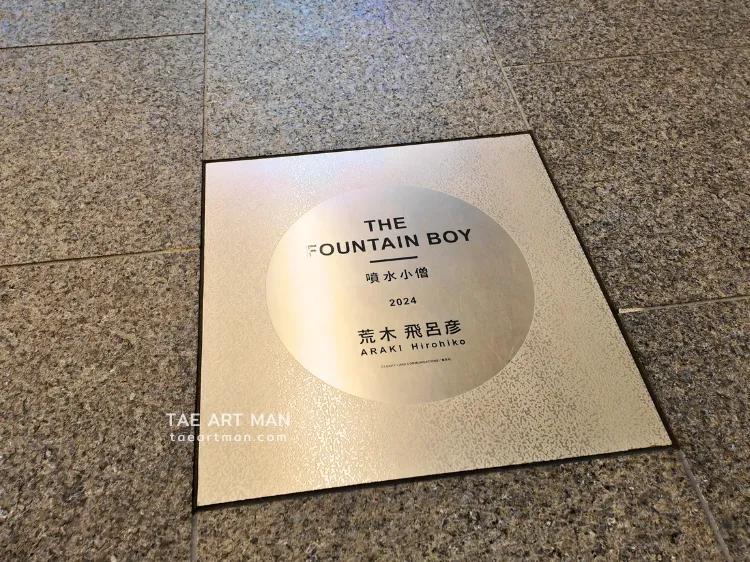
A reflection of Osaka’s Vibrant Identity
In JoJo’s Bizarre Adventure, characters often embark on epic journeys, encountering new worlds and overcoming challenges. “THE FOUNTAIN BOY ” reflects that spirit of discovery and resilience, and its presence at Osaka Station serves as an invitation for travelers and locals alike to embark on their journeys with optimism.
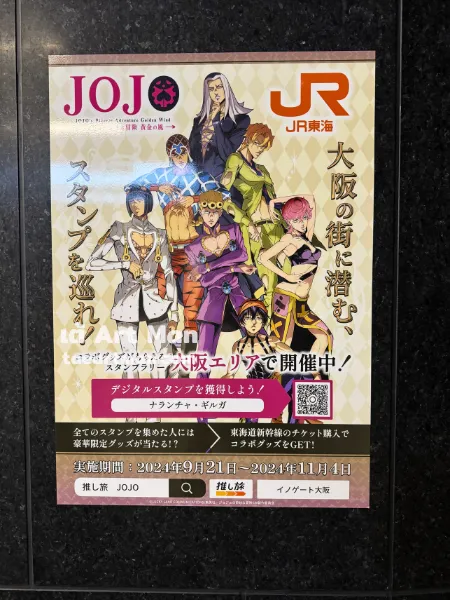
As Osaka continues to grow as a cultural hub and be a host of the coming up “World Expo 2025”. “The Fountain Boy” is likely to become another signature piece of the city’s landscape, joining the ranks of public artworks that shape civic identity and bring art closer to everyday life. In Araki’s words, the piece is intended to bring “comfort, hope, and happiness”—a sentiment that, in the fast-paced environment of a train station, becomes even more impactful. For fans of JoJo and newcomers to Araki’s work, the stained glass stands as a reminder of art’s power to elevate, inspire, and connect. THE FOUNTAIN BOY is located JR Osaka Station West Gate.
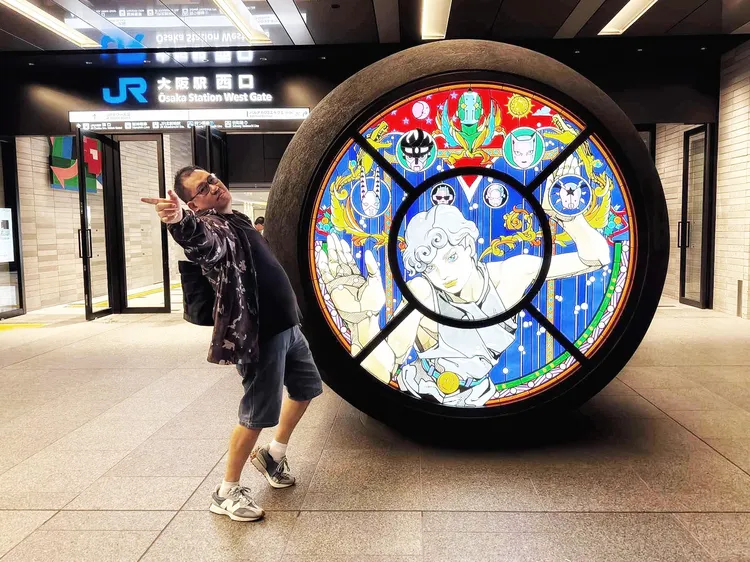
Story: Tae Art Man
Photo: Tae Art Man and Tooh Athit